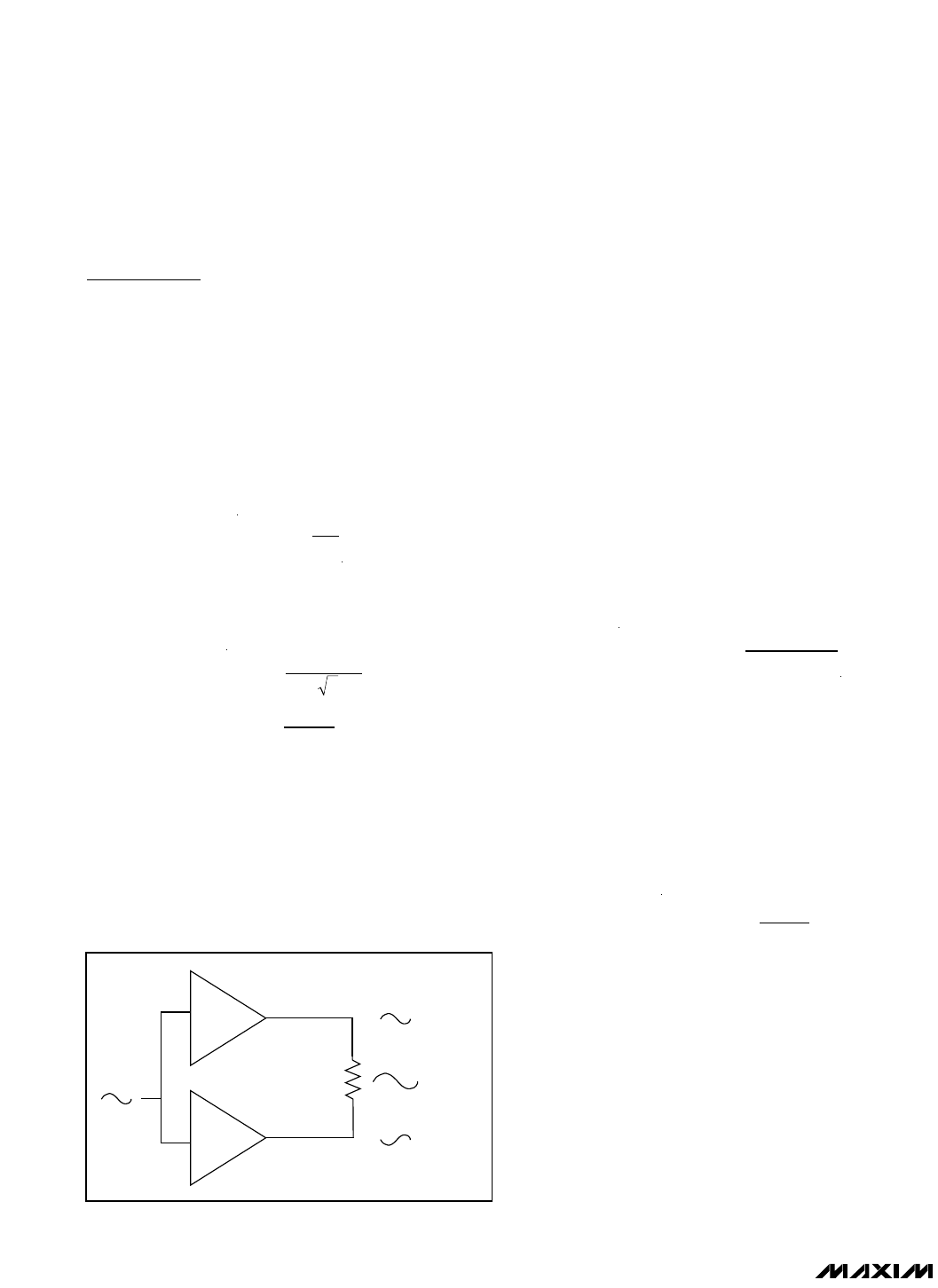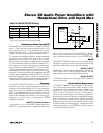
MAX9777/MAX9778
Stereo 3W Audio Power Amplifiers with
Headphone Drive and Input Mux
18
____________________________________________________________________________________________________________________________________________________________________________
Applications Information
BTL Speaker Amplifiers
The MAX9777/MAX9778 feature speaker amplifiers
designed to drive a load differentially, a configuration
referred to as bridge-tied load (BTL). The BTL configu-
ration (Figure 8) offers advantages over the single-
ended configuration, where one side of the load is
connected to ground. Driving the load differentially
doubles the output voltage compared to a single-
ended amplifier under similar conditions. Thus, the
devices’ differential gain is twice the closed-loop gain
of the input amplifier. The effective gain is given by:
Substituting 2 x V
OUT(P-P)
for V
OUT(P-P)
into the follow-
ing equations yields four times the output power due to
doubling of the output voltage:
Since the differential outputs are biased at midsupply,
there is no net DC voltage across the load. This elimi-
nates the need for DC-blocking capacitors required for
single-ended amplifiers. These capacitors can be large
and expensive, consume board space, and degrade
low-frequency performance.
When the MAX9777 is configured to automatically detect
the presence of a headphone jack, the device defaults to
gain setting A when the device is in speaker mode.
Single-Ended Headphone Amplifier
The MAX9777/MAX9778 can be configured as single-
ended headphone amplifiers through software or by
sensing the presence of a headphone plug (HPS). In
headphone mode, the inverting output of the BTL
amplifier is disabled, muting the speaker. The gain is
1/2 that of the device in speaker mode, and the output
power is reduced by a factor of 4.
In headphone mode, the load must be capacitively
coupled to the device, blocking the DC bias voltage
from the load (see the
Typical Application Circuits
)
.
Power Dissipation and Heat Sinking
Under normal operating conditions, the MAX9777/
MAX9778 can dissipate a significant amount of power.
The maximum power dissipation for each package is
given in the
Absolute Maximum Ratings
section under
Continuous Power Dissipation or can be calculated by
the following equation:
where T
J(MAX)
is +150°C, T
A
is the ambient tempera-
ture, and θ
JA
is the reciprocal of the derating factor in
°C/W as specified in the
Absolute Maximum Ratings
section. For example, θ
JA
of the TQFN package is
+29°C/W.
The increase in power delivered by the BTL configura-
tion directly results in an increase in internal power dis-
sipation over the single-ended configuration. The
maximum power dissipation for a given V
DD
and load is
given by the following equation:
If the power dissipation for a given application exceeds
the maximum allowed for a given package, either reduce
V
DD
, increase load impedance, decrease the ambient
temperature, or add heatsinking to the device. Large
output, supply, and ground PC board traces improve the
maximum power dissipation in the package.
Thermal-overload protection limits total power dissipa-
tion in these devices. When the junction temperature
exceeds +160°C, the thermal-protection circuitry dis-
ables the amplifier output stage. The amplifiers are
enabled once the junction temperature cools by 15°C.
This results in a pulsing output under continuous ther-
mal-overload conditions as the device heats and cools.
P
V
R
DISS MAX
DD
L
()
=
2
2
2
π
P
TT
DISSPKG MAX
J MAX A
JA
()
()
=
−
θ
V
V
P
V
R
RMS
OUT P P
OUT
RMS
L
=
=
−()
22
2
A
R
R
VD
F
IN
=×2
+1
V
OUT(P-P)
2 x V
OUT(P-P)
V
OUT(P-P)
-1
Figure 8. Bridge-Tied Load Configuration


















